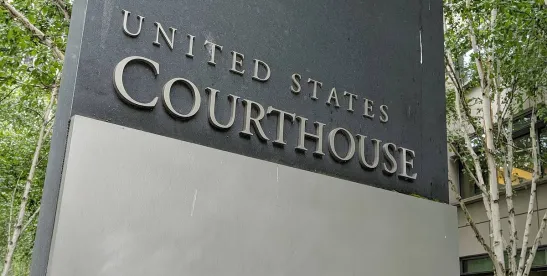The Federal Circuit recently clarified in Ingenico Inc. v. IOENGINE, LLC that inter partes review (IPR) estoppel does not extend to physical systems described in prior art patents or printed publications.
In doing so, the Federal Circuit resolved a long-standing district court split by confirming that system prior art defenses are viable post-IPR, even if those systems were described in prior art patents and printed publications that could have been raised in the underlying IPR proceeding.
Background
On March 23, 2018, IOENGINE, LLC sued Ingenico Inc. in the District of Delaware for infringement of various patents, including US Patent Nos. 9,059,969 (’969 patent) and 9,774,703 (’703 patent). The asserted patents are directed to technologies including a computer portable device, such as a USB thumb drive. Ingenico challenged IOENGINE’s asserted patents by filing IPR petitions at the Patent Trial and Appeal Board (PTAB). The PTAB found most claims of the ’969 and ’703 patents to be unpatentable. At summary judgment, the district court held Ingenico to be estopped from introducing prior art evidence in the form of “DiskOnKey Upgrade” software documents unless the documents were part of a grounds that could not have been reasonably raised in the IPRs.
At trial, Ingenico introduced a prior art DiskOnKey device and its software application Firm Upgrader. Ingenico argued the DiskOnKey device invalidated the claims because it was “on sale” or “in public use” under 35 U.S.C. § 102(a) (pre-America Invents Act), grounds that could not have been reasonably raised during IPR. While the jury found infringement, it also found the claims to be invalid as either “on sale” or “in public use.”
IOENGINE appealed the jury’s finding that the DiskOnKey device was either “one sale” or “in public use” and argued in the alternative for a new trial, claiming Ingenico should have been estopped from presenting its documentary prior art evidence under 35 U.S.C. § 315(e). IOENGINE reasoned that IPR estoppel barred Ingenico’s evidence because it was “entirely cumulative and substantively identical” to DiskOnKey user guide publications that could have been raised during the IPR. IOENGINE further argued it was entitled to a new trial because the district court provided incorrect jury instructions.
The Federal Circuit disagreed and held that IPR estoppel does not prevent parties from presenting system or product prior art (such as the DiskOnKey device) in district court, even if supporting prior art evidence in the form of related patents or publications could have been raised in during IPR. The court further explained the scope of IPR estoppel under 35 U.S.C. § 315(e)(2) is limited to “grounds” of the claimed invention based on patents or printed publications under U.S.C. §§ 102 or 103. In so doing, the court clarified “grounds” are different from “prior art evidence itself.” Lastly, the Federal Circuit found no error in the district court jury instructions.
Practical Considerations
Before Ingenico, district courts disagreed on whether system prior art, shown through technical documents, publications, and patents, was subject to IPR estoppel. Ingenico resolves this long-standing split, confirming that system prior art defenses are viable post-IPR, even if those systems were described in prior art patents and printed publications that could have been raised in the underlying IPR proceeding.
While the Ingenico decision provides clarity on the scope of IPR estoppel, it also exposes patent owners to continued validity challenges and may undermine the efficiency and finality that the IPR process was intended to provide. The ability to use system prior art in district court, even when related materials could have been raised in IPR, preserves important invalidity defenses but at the cost of increased litigation complexity and uncertainty. The decision highlights a tension between statutory interpretation and policy objectives and may prompt further legislative or judicial clarification in the future.



 />i
/>i

